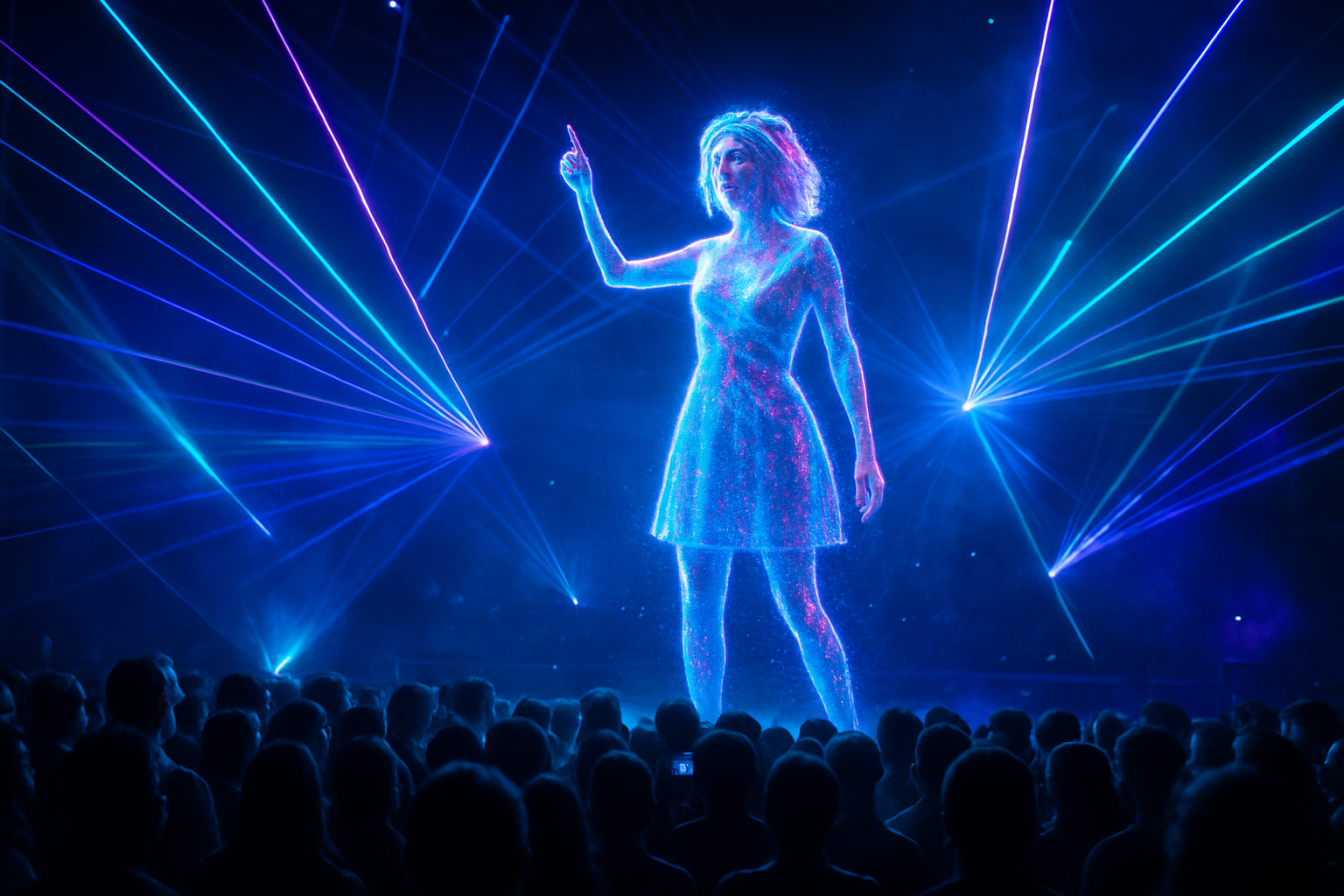Holographic Concerts: Reshaping Live Music Experiences
In an era where technology continually pushes the boundaries of artistic expression, holographic concerts have emerged as a groundbreaking phenomenon in the music industry. This innovative fusion of cutting-edge visual technology and live performance is revolutionizing the way audiences experience music, blurring the lines between reality and digital artistry. As holographic concerts gain traction globally, they're not just changing how we consume music, but also challenging our perceptions of presence, mortality, and the very nature of live entertainment.

Technological Marvels Behind the Magic
At the heart of holographic concerts lies a complex interplay of advanced projection systems, motion capture technology, and real-time rendering software. Unlike traditional 3D projections, modern holographic performances utilize sophisticated light field displays that create the illusion of a three-dimensional figure without the need for special glasses. This technology allows for incredibly lifelike representations of artists, complete with realistic movements and interactions with live performers on stage.
Bringing Legends Back to Life
One of the most controversial yet fascinating aspects of holographic concerts is their ability to resurrect deceased artists for new performances. Following the success of the Tupac hologram, several other late musicians have been digitally reincarnated for posthumous concerts. Notable examples include Michael Jackson’s appearance at the 2014 Billboard Music Awards and Whitney Houston’s holographic world tour in 2020. These events have sparked intense debates about the ethics of using an artist’s likeness after death and the impact on their legacy.
Expanding Creative Possibilities for Living Artists
While posthumous performances grab headlines, holographic technology is also opening up new creative avenues for living artists. Musicians are using holograms to create mind-bending visual spectacles, perform in multiple locations simultaneously, or collaborate with digital versions of themselves on stage. This technology allows for performances that would be physically impossible in traditional concerts, pushing the boundaries of what’s achievable in live music production.
The Global Reach of Holographic Tours
Holographic concerts are rapidly expanding the geographical reach of live music experiences. Artists can now perform in multiple venues across the globe simultaneously, without the need for extensive travel. This development has significant implications for reducing the carbon footprint of world tours while making high-profile performances more accessible to audiences in remote locations. The COVID-19 pandemic has further accelerated the adoption of this technology, as artists and promoters seek alternatives to traditional live concerts in the face of social distancing measures.
Challenges and Controversies
Despite their growing popularity, holographic concerts face several challenges and ethical concerns. Critics argue that these performances lack the spontaneity and human connection of traditional live shows. There are also ongoing debates about intellectual property rights, particularly for posthumous performances. Additionally, the high cost of producing holographic concerts currently limits their accessibility to only the most established artists and venues, raising questions about equity in the music industry.
The Future of Live Music Experiences
As technology continues to evolve, the potential applications for holographic concerts seem boundless. Industry experts predict advancements in haptic feedback and augmented reality that could further enhance the immersive nature of these performances. There’s also growing interest in using holographic technology for interactive fan experiences and virtual meet-and-greets. As audiences become more accustomed to digital performances, holographic concerts may well become a staple of the live music landscape, coexisting with traditional concerts to offer a diverse range of experiences for music lovers worldwide.
Conclusion
Holographic concerts represent a paradigm shift in the world of live music, offering new ways to experience performances and challenging our understanding of what constitutes a live show. As this technology continues to evolve and become more accessible, it has the potential to democratize access to live music experiences, preserve the legacies of iconic artists, and push the boundaries of creative expression. While debates about authenticity and ethics persist, there’s no denying that holographic concerts are carving out a significant niche in the future of entertainment, bridging the gap between technology and artistry in ways previously confined to the realm of science fiction.





